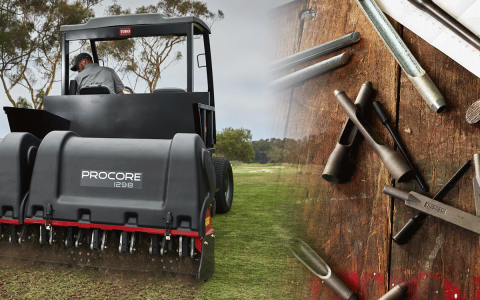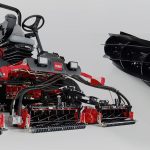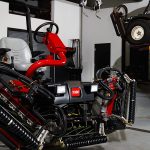Equipment is one of the largest investments any golf course makes. But that equipment only delivers a return when its working properly. That’s why preventive maintenance is essential to get the most out of your machines.
An effective preventive maintenance program includes equipment inspections, scheduled service based on manufacturer recommendations and replacement of parts as needed. For turf equipment, service intervals are typically based on hours of operation.
We’ll discuss the components of a successful preventive maintenance program in more detail in a moment, but first, it’s worth exploring why it makes sense to have a program in place.
Why Preventive Maintenance Is Important
- Safety. Your equipment and vehicles must be safe to operate. If worn components go unrepaired, it increases the risk of a crash or injury.
- Availability and productivity. Your crew depends on your equipment to be ready to use when they need it. Preventive maintenance helps you maximize machine availability.
- Longer machine life. Performing regular scheduled maintenance helps extend the working life of your equipment, which helps you stretch your investment farther.
- Cost savings. Preventive maintenance is proactive. It helps minimize breakdowns that require more costly unscheduled repairs.
Components of an Effective Program
As you develop your preventive maintenance program, consider the following recommendations:
- Create checklists. Document a set of steps to follow each time a specific preventive maintenance service is performed to ensure nothing is missed.
- Collect operator feedback. Put a system in place for operators to report when they have a problem or notice an issue with a machine so it can be addressed in maintenance.
- Set maintenance schedules. Check the owners manual or manufacturer guidelines for recommended service intervals for each machine.
- Hire highly trained technicians. Today’s equipment is becoming more and more complex with hybrid and computer technology. If you are not able to hire technicians with the necessary skills and commitment to stay current with trends and ongoing training, consider outsourcing your service program. Your local Toro distributor offers highly trained, certified technicians who are skilled and knowledgeable about the latest Toro equipment.
- Establish a tracking system for scheduling and keeping records on each machine. An electronic system offers significant advantages in terms of accuracy, time savings, convenience and reporting capabilities.

Tracking Is Key
Another advantage of using an electronic system to track all of your equipment maintenance records is the ability to analyze costs over time. Electronic systems make it easy to generate reports on expenses such as parts, labor and fuel to determine which equipment costs the most to maintain. This data can help you make decisions about your fleet and justify future purchase decisions.
Toro’s MyTurf® web-based fleet management system is an example of a system with these capabilities. The MyTurf system allows you to track your entire fleet online, access the latest Toro manuals, order parts and more. Additional options include the ability to set automated maintenance alerts, create work orders and track your parts inventory.
Toro is currently working on an extensive update to the MyTurf system to support rapidly changing equipment technology in the future, including the ability to request service support from your local Toro distributor.





